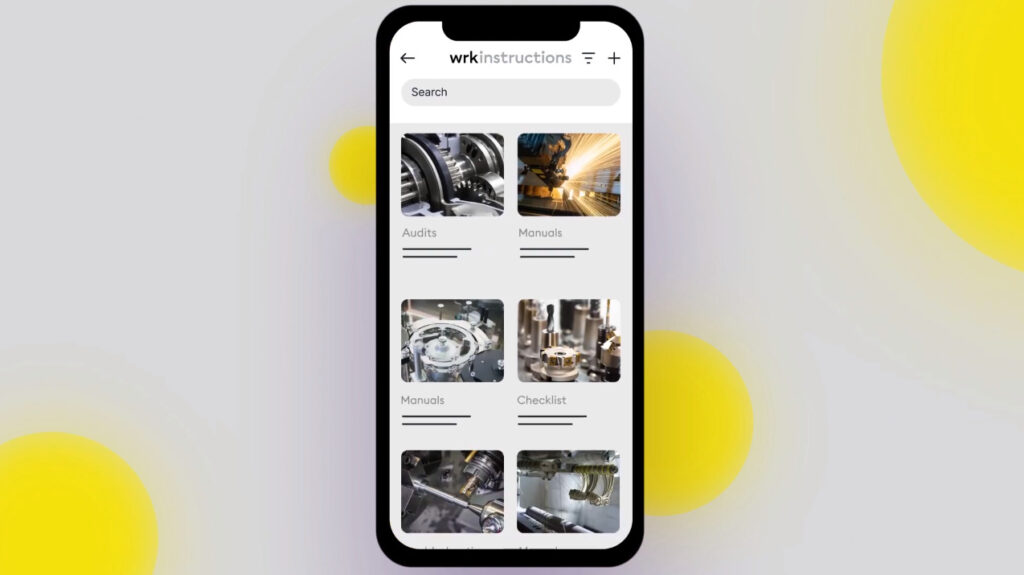Manufacturing Work Instructions for Quality Control

Traditional paper-based work instructions for manufacturing are not always functional; they are inconvenient and difficult to produce, and a paper instruction manual often causes more problems than it solves. 90% of paper instructions fail to provide a satisfactory solution for their users.
Industry 4.0 is making the world of manufacturing faster, more digital, and more connected at an unprecedented pace. Providing the proper knowledge to your workforce is critical. Manufacturing is increasingly digitized, and the global supply chain is evolving more complex.
The company needs to find alternative tools, such as digital work instructions, that guide their workforce in real-time in the four critical areas of quality: training, problem-solving, results, and continuous improvement.
What are digital work instructions?
Digital work instructions in manufacturing are the electronic evolution of standard work instructions, such as quality manuals or standard operating procedures (SOPs).
Good digital work instructions are critical for a company, as they explain the best way to complete a specific procedure in a standardized way, helping technicians perform specific tasks. Digital work instructions are typically used on a computer, mobile device, or industrial smart glasses and include step-by-step instructions combined with text, images, video, and augmented reality (AR).

Digital work instructions for manufacturing process
Many manufacturing companies today still use paper versions of technical documents and traditional software solutions, causing multiple problems as manual entry can lead to errors, complex updates, and outdated versions. All of this can hurt production quality and safety.
In addition, in times of skilled labor shortages and increasing machinery and product variants, precise work instructions are critical to producing efficiently with stable and high quality.
Use cases of work instructions
Introducing work instructions to manufacturing companies helps simplify any operational procedure with an intuitive interface for your technicians.
It increases quality, reduces errors, and improves safety and efficiency. It also helps operations managers better understand the status of operational procedures and the efficiency of their workforce, collaboratively resolve malfunctions, and use the results to improve business processes.
Manufacturing work instructions are used for a wide range of use cases:
- Security
- Quality control
- Maintenance
- Operations
- Assembly
- Workforce training and development
- Employee engagement
- Continuous improvement
Acty, the digital work instructions software
Manufacturing companies are turning to automation and technology to improve their processes, procedures, and work and get better results on the factory floor. Digital work instructions can easily integrate into these new and improved methods, providing a better, faster, and more effective way to improve every business process and procedure.
Acty is digital work instruction software that creates instruction manuals and step-by-step procedures for technicians for assembly, maintenance, and remote support. It allows you to keep track of work done on machinery, communicate with your team, and have complete visibility of tasks performed.

Acty’s work instructions enable you to transform how your company works by putting the technician at the center and ensuring that any employee, even the least experienced, can safely and efficiently complete the task of remote service or maintenance on the machinery.
With digital work instructions, you can ensure that process knowledge remains in-house and can be further refined based on local feedback, collected process data, and ease of implementing changes through the intuitive interface.
Discover how to write a work instructions for manufacturing
Work instructions benefits
But in detail, what are the real benefits of digital work instruction?
> Increases productivity and efficiency
Digital work instructions in manufacturing help operators achieve quality results. Standardizing your best practices in an intuitive interface will help your technicians follow more efficient methods. This means your technicians can complete specific tasks faster and more accurately, increasing productivity.
> Decreases the risk of error
Work instructions are designed so that field technicians can complete a procedure, even the most complex ones, in the same way every time. When everyone works with the same guidelines, the output will be uniform, resulting in more efficient work and fewer errors. And nothing could be more critical in terms of quality control.
> Maximizes product quality
Manufacturing is a competitive industry, and customers demand uniform, high-quality products. With precise and well-designed manufacturing work instructions, companies achieve high levels of efficiency, making waste exceptions rather than recurring incidents.
Companies can refer to ISO9000 as a guideline for what is acceptable in terms of quality management. Having documented procedures in place is one of the most important steps companies can take as they establish quality assurance practices.
> Keeps track of activities performed
If a customer asks for proof that the job was well done, you can send them a report that the task was completed. With digital work instructions, your company will have a clear view of the activities performed on the machinery in your plants.
> Simplifies training and skills development
Manufacturing companies are experiencing a shortage of qualified technicians, leading to increased resolution times. New technicians must be trained quickly, efficiently, and, most importantly, effectively. Having clear and precise work instructions in a manufacturing company is the best way to achieve this and quickly train current employees.
> Be good for the environment: go paperless
Using traditional work instructions used to waste a lot of paper. By switching to digital, you will significantly impact the environment. Your company will migrate to user-friendly service software to help you achieve your environmental goals!



